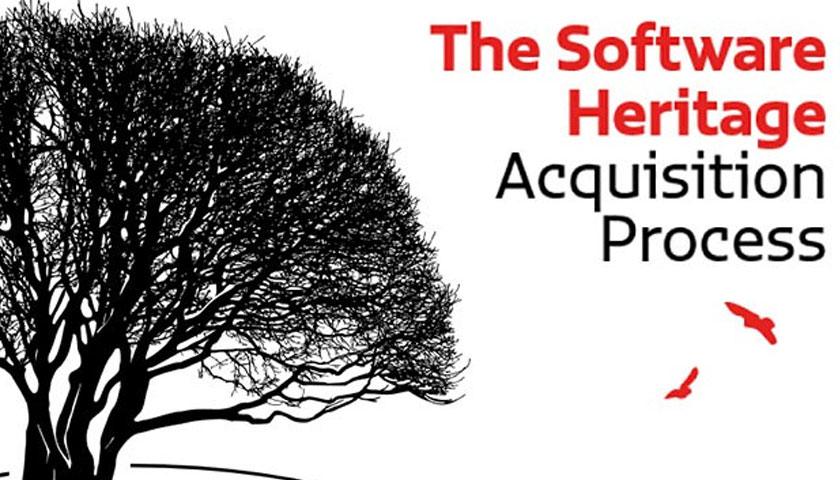“Part of our Heritage, Pillar of our Present, Enabler of our Future” quoted the first sentence of Paris Call on Software Source Code as Heritage for Sustainable (UNESCO, 2019), demonstrating the necessity of preserving software source code. In this regard, the first-ever Software Heritage Acquisition Process was launched on 10 October 2019, in Pisa, Italy.
As a part of the Pisa Internet Festival, UNESCO, the University of Pisa and Inria, hosted the official launching event of the Software Heritage Acquisition Process (SWHAP), a guideline for the preservation of legacy software source code, in presence of Prof. Paolo Mancarella, Rector of the University of Pisa.
The Software Heritage Acquisition Process describes at an abstract level the different necessary phases, as well as the necessary resources, without making specific assumptions on the tools, platforms and technologies that may be used for this purpose.
The launch aims at promoting SWHAP process so that it could be adopted by the international community, including the software industry, research institutions, global, national and local archives. This work falls within UNESCO’s efforts for the promotion of universal access to information through open and inclusive solutions and the innovative use of ICTs for sustainable development.
As mentioned Prof. Mancarella, “software is everywhere; it is the framer of our present. […] Developed by human, software source codes record the human history of the past century through the embedded computational thinking of their designers”. It is important to collect [the software], preserve it and make it available to everyone”, said Bruno Sportisse, CEO of Inria, France.
Bearing the importance of the software in mind, the Software Heritage initiative supported by UNESCO, has already archived over 6 billion source files from more than 90 million projects from various platforms and repositories.
“We do not only preserve software source code or promote better use of software,” notes Roberto Di Cosmo, CEO of Software Heritage, “but also try to foster better science, build the infrastructure for preserving, sharing and referencing research software, like a stepping stone for reproducibility and a necessary complement to Open Access.” This joins UNESCO’s work for the promotion of Open Access and the use of Free and Open Source Software: “UNESCO encourages software developers, memory institutions, the business sector, academia and civil society as a whole to support these efforts, fostering international cooperation to build a common framework for software preservation and access,” remarks Moez Chakchouk, Assistant Director-General for Communication and Information at UNESCO.
Software Heritage is the world’s first global archive of software source code initiated by Inria, the French National research institute for digital science in 2017. UNESCO has cooperated with Inria to support the creation of Software Heritage, which was officially launched in UNESCO Headquarters in June 2018. The Paris Call on Software Source code as Heritage for sustainable development was published in February 2019, following a international expert group meeting organized by UNESCO and Inria.
The e-version of the Software Heritage Acquisition Process is available at: https://unesdoc.unesco.org/ark:/48223/pf0000371017?posInSet=…
For more information:
